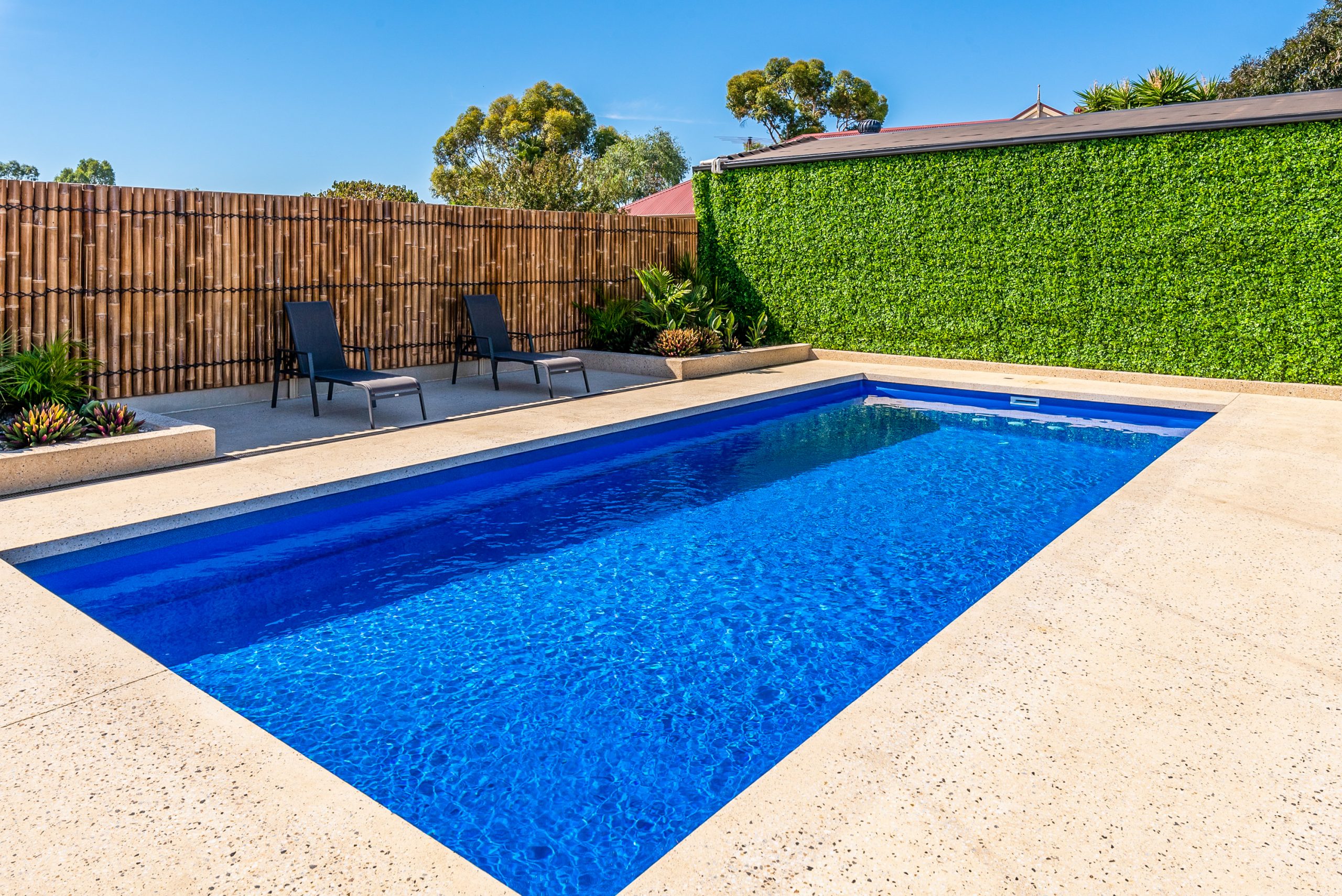There is no doubt that a swimming pool is a great addition to a residential property. It serves several benefits like an increase in property value, great outdoor aesthetic appeal, and the creation of a unique entertainment centre. However, it’s important to get information on pool construction before committing to owning one since There is a lot to consider. It’s best to analyze the different options available to understand what it entails to build a swimming pool.
Fibreglass Pool
One of the best swimming pools for residential properties is the fibreglass pool. It’s a prefabricated pool designed from interwoven glass threads covered with polyester resin.

- The Construction
Construction of a fibreglass pool is quite straightforward and follows simple steps. The initial step involves forwarding the pool dimensions to the designer to fabricate the shell. Secondly, the site is prepared to receive the precast pool. Site preparation involves excavation, levelling, and reinforcement of the installation site. Finally, the shell is delivered to the site for installation. Most pools are delivered as single units, but large shells may come as split units.
Once the shell is in place, all the fittings are installed before coping (the process of installing a cap at the edge of the pool to protect the shell). The final step is to rework the area around the pool to ensure safety and enhance the overall appeal of the pool area.
- The Pros and Cons
Fibreglass swimming pools have the best swimming experience since the walls are smooth and have a nice feel. You are not at risk of getting scratched or cut while swimming in a fibreglass pool.
Moreover, fibreglass pools are easy to install. The process involves laying a prefabricated pool into an excavated site. As a result, installation costs are low. Furthermore, the pool can accommodate additional fittings like spar jets and pool lights.
Nonetheless, the pool has some drawbacks. The fibreglass build is quite expensive. Moreover, there are design limitations to the pool’s size and shape, and some manufacturers only provide a small catalogue of options. Finally, repairs to the fibreglass shell are quite expensive and require expertise.
All in all, the fibreglass pool is a great option if you have the space and money.
Vinyl Pool
The vinyl pool is a unique option designed with a waterproof lining that contains water inside the swimming pool. The design is quite simple and easy to set up.
- The Construction
Building a vinyl pool begins with selecting a design and the final dimensions. The next step is to excavate the site for the installation. The approach depends on the pool dimensions, but it’s best left to the professionals.
After excavation, site preparation is done before installing the side panels for the pool. The floor is also reworked to level the surface and strengthen the structure. Reinforcement is often done to prevent buckling once the water is added to the pool. Finally, the vinyl sheet is fitted into the pool, and water is added. The result is a vinyl swimming pool.
- The Pros and Cons
A vinyl pool is an inexpensive inground swimming pool. It has a simple design, and installation is quite quick. Moreover, the pool offers a great swimming experience since the surface is smooth. The pool also welcomes infinite design options, including custom designs.
The downside to owning a vinyl pool is the high lifetime costs. The vinyl must be replaced at least every decade, and the cleaning procedures are strict to prevent algae growth. Nonetheless, it’s a great pool for a residential space.
Concrete Pool
The concrete inground pool is the oldest swimming pool design. The pool has stood the test of time and remains one of the most popular choices for homeowners.
- The Construction
The approach to building an inground concrete pool is complex. The process requires pool engineers with a skilled team to handle each step. Like all inground pools, the first step is design selection. However, concrete pools need a detailed blueprint of the pool, fittings and poolside design.
Excavation follows the dimensions of the blueprint and requires heavy machinery. The next step involves laying the concrete and steel reinforcements to build the final design of the pool. Furthermore, the walls and floor are plastered and tiled. Finally, the finishing touches are made on the pool, and all fittings are installed before filling it with water.
- The Pros and Cons
Concrete pools are the most versatile design for inground swimming pools. They can take any shape and run any depth. Moreover, the pool can accommodate various fittings, including fountains, jacuzzis, waterfalls, and a bar section.
However, the drawbacks of concrete pools include the high installation and lifetime costs, expensive maintenance fees, and a rough feel on the pool wall. Moreover, the pool is vulnerable to algae. Although it’s an extravagant option, the look of a concrete pool is worth the investment.
Pool construction is complex; therefore, getting the right pool company for the job is crucial. Look up the available options and do thorough research since you can’t afford to get the wrong selection.

